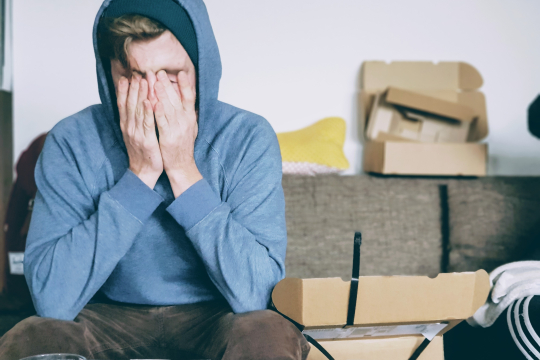
What Does Stimulant Withdrawal Look Like?
If you’re struggling with an addiction to a stimulant and are reading up on how to recover, you may have heard that detox, although a necessary part of your addiction recovery journey, comes with withdrawal symptoms. But what does a stimulant withdrawal look like? Let’s take a look.
Table of Contents:
What is a stimulant?
Stimulants are one of the most diverse categories of drugs as it consists of prescription medications, over-the-counter medications, illicit drugs, and common everyday substances. The range of stimulants includes allergy medication that contains amphetamines, nicotine, Adderall and Ritalin, MDMA (Ecstasy), cocaine, and caffeine.
The technical definition labels a stimulant as a substance that activates the brain and other parts of the body and increases the activity in those areas. The substances may also evoke feelings of pleasure, excitement, invigoration, or euphoria.
Uses and effects of stimulants
Due to the sheer number of types of stimulants, the uses and effects can be far-reaching.
Many prescribed medications are in the category of stimulants. For instance, most medications that treat ADHD are stimulants designed to interact with the brain and restore the production of dopamine to promote focus and concentration. Similarly, medications designed to control sleep disorders such as narcolepsy contain some form of stimulant in them as well.

The most popular and most consumed stimulant in the world is contained in many foods and drinks that we consume every day. The stimulant that is found in many foods and beverages, specifically coffee, is known as caffeine. It brings a feeling of being awake and alert. While some studies show that caffeine is addictive, it is so widely available and widely used that information is disputed as to whether it is truly addictive and has the same harmful effects as other stimulants.
There are also illicit stimulants, such as cocaine and crystal meth, as well as “speed” and other forms. Cocaine, in particular, has been around for hundreds of years in some form or other and was once widely used for medicinal purposes before becoming illegal due to its addictive nature.
Addictive potential of stimulants and how they interact with the body
The main principle behind why stimulants are so addictive is due to the fact that they interact with the body in a way that changes the chemistry of the body. Particularly because they interact with both the brain and central nervous system, both of these parts of the body are vital to the normal function of organs, cells, and tissues, but once they are exposed to stimulants, that begins to change.
Many stimulants produce positive effects that people enjoy, which is the primary reason they continue using the various substances beyond what is prescribed or what is safe. Even the more illicit substances provide some sort of benefits such as appetite suppression, increased energy and concentration, and even mood-altering effects.
Even the most benign of stimulants alter the chemistry of the body in some way, and over time this causes the body to need that substance to function normally. This is basically what people know as having cravings for a drug, the body telling them they need it in order to feel “normal.” This is the precursor to full-blown addiction.
What is stimulant withdrawal?
When your body is addicted to a drug, it has become dependent on the effects of the drug in order to function normally. Stopping or reducing the use of these drugs will cause withdrawal symptoms, as your body “needs” the drug.
“Stimulant withdrawal” refers to symptoms specifically connected to stopping use of any stimulant, illegal or otherwise. These drugs include amphetamines, cocaine, crack cocaine, methamphetamines, and crystal meth, among others.
What’s the difference between withdrawal and side effects?
Although both withdrawal and side effects cause uncomfortable symptoms, they are very different from each other. Side effects refer to symptoms that you have while you are still taking the drug. Withdrawal refers to symptoms you have after you have stopped taking the drug.
What are the withdrawal symptoms of stimulants?
Withdrawal from stimulants can be very uncomfortable, but they do not typically cause life-threatening symptoms. The onset of symptoms will vary depending on the type of stimulant used. Symptoms can appear immediately after your last dose or take several hours to manifest.
Symptoms of stimulant withdrawal include:
- Depression or feelings of sadness
- Irritability
- Lethargy or low energy
- Drug cravings
- Changes in sleep patterns, such as insomnia
- Fatigue
- Difficulty concentrating
- Anxiety
Withdrawal can be tricky with stimulants because of how wide a range of substances they cover. Compared to a category of drugs like opioids, which only covers one type of medication, stimulants are so broad that the withdrawal effects and timeline can vary greatly. It is also important to take into account the history of use for the individual as well as health and environmental factors.
In some cases, the stimulant is short-acting and can cause symptoms like anxiety, depression, fatigue, increased heart rate, sweating, and vomiting and may only last a few days. Other more potent or long-lasting stimulants can cause more diverse effects such as tremors, seizures, hallucinations, and even full-blown psychosis. The longer-lasting stimulants can take days for the withdrawal to start and weeks or even months for the effects to fully cease.
You may experience some or all of these symptoms. After you’ve begun detox, you can expect for withdrawal to subside within several days to several weeks, depending on how long it takes your body to overcome its dependence on the drug.
Beyond the physical dependence, psychological dependence on stimulants can last for months or years after a successful detox program. That’s why ongoing aftercare programs such as counseling and coaching can help you develop the skill set you need to avoid relapse.
How can you avoid withdrawal symptoms?
Unfortunately, there is no sure-fire way to completely avoid withdrawal symptoms. Some people do experience more symptoms than others depending on their genes, the type of drug they are addicted to, the duration of their addiction, and other factors.
It is never advisable to quit using stimulants “cold turkey” as this can magnify the effects of withdrawal and lead to even more severe health consequences, especially if unmonitored.
Medically managed detox can help you safely manage the severity of symptoms. A medical professional will monitor your progress through detox and may prescribe medications to help mitigate your symptoms. This dedicated care can help you get past this difficult but crucial phase of your recovery journey.
Study drugs and prescription stimulants
Study drugs like Adderall and Ritalin are widely used to enhance focus and energy, but they carry significant risks, including addiction, health complications, and legal issues. While they may offer short-term benefits, healthier alternatives such as proper study techniques, balanced lifestyles, and academic support systems are safer and more sustainable ways to improve focus and productivity. Understanding the risks and benefits can help individuals make informed decisions about their use.
Prescription stimulants like Adderall, Ritalin, Concerta, and Vyvanse are commonly prescribed to treat conditions like ADHD and narcolepsy. These drugs typically contain dextroamphetamine, lisdexamfetamine, or methylphenidate, which stimulate the central nervous system.
While study drugs can provide short-term benefits, using these drugs without medical supervision can lead to cardiovascular problems, sleep disruptions, and changes in appetite. The misuse of study drugs is linked to anxiety, depression, and the potential for dependency. Using study drugs without a prescription is illegal and can result in severe consequences, including academic penalties or career setbacks.
There are safer, healthier ways to enhance focus and academic performance without resorting to study drugs. Try out new study strategies like time management and active learning. Healthy habits like regular sleep, balanced nutrition, and exercise play an important role in maintaining your energy levels and focus. Many schools and workplaces offer support systems, including tutoring, academic counseling, and mental health services.
Manage Stimulant Withdrawal Safely With In-Home Detox
Overcoming withdrawal symptoms is challenging enough without having to think about rearranging your life around inpatient care. In-home detox with Elite Home Detox can help cut out this travel time and schedule disruptions.
One of our team members will stay with you at your home 24/7 for the duration of detox, monitoring your progress and adjusting medications as needed to improve your comfort. Unlike traditional, rigid 12-step rehab programs, you will receive customized care tailored to your unique needs. This helps ensure that you get the care you need to not only overcome your addiction, but stay sober for good.
Elite Home Detox is here for you if you need help withdrawing from stimulants. We can provide you with the one-on-one care you need while going through detoxification and withdrawal symptoms caused by addiction. And best of all, we come to you. You can make a full and lasting recovery in the comfort of your home with the help of our expert medical team. Contact us today to learn more.
Although Adderall is an invaluable part of ADHD treatment for many people, it is possible to become addicted to this prescription drug. Elite Home Detox can help you recover from stimulant addiction with our personalized treatment programs and discreet in-home appointments. We work with you every step of the way to overcome addiction and develop healthy coping mechanisms to help you stay sober for good. Make an appointment today by giving us a call or clicking the button below.


